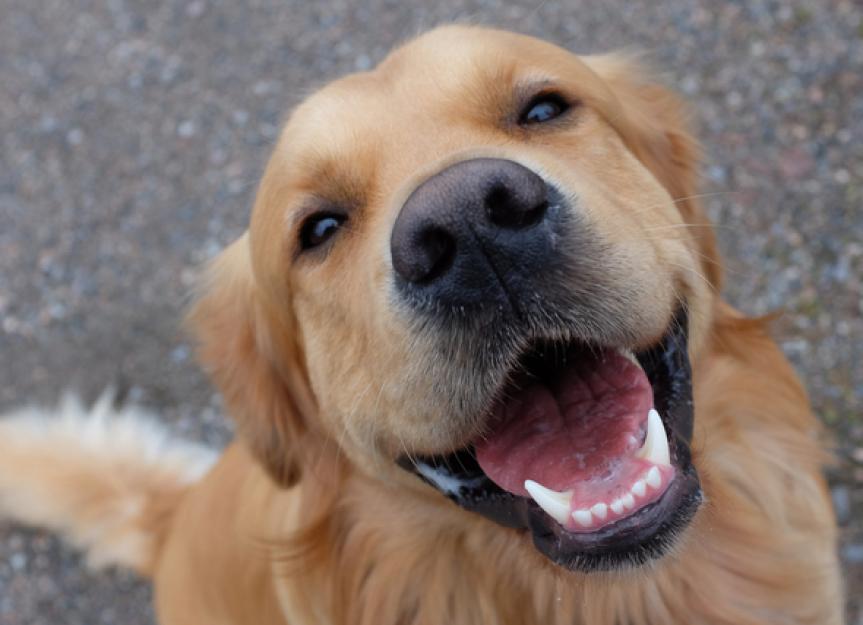Why Your Dog Loves Their Teddy: A Deep Dive Into Canine Comfort
From the earliest days of domestication, over 14,000 years ago and even before the dawn of agriculture, dogs forged an unparalleled bond with humans. This ancient partnership has evolved into a profound companionship, making the sight of a dog with teddy, their cherished comfort object, a heartwarming testament to their emotional depth and our shared history. This article delves into the fascinating reasons behind this endearing behavior, exploring the psychological, biological, and behavioral factors that explain why a simple stuffed toy can mean so much to our beloved canine companions.
Dogs, known scientifically as Canis lupus familiaris, a subspecies of the gray wolf, have long been more than just pets; they are integral members of our families. Their remarkable ability to adapt, learn, and form deep emotional attachments has allowed them to thrive alongside us, becoming the most popular pet on the planet, with a third of all households worldwide owning a dog, according to a 2016 consumer insights study. Understanding their unique needs and behaviors, especially their attachment to objects like a teddy, offers invaluable insights into their well-being and strengthens the incredible bond we share.
Table of Contents
- The Ancient Bond: Dogs as Our First Companions
- Understanding Canine Comfort Objects: More Than Just a Toy
- Behavioral Insights: Why Dogs Cling to Teddies
- The Role of Breeds and Temperament in Toy Preference
- Choosing the Right Teddy for Your Dog
- When a Teddy Becomes a Concern: Recognizing Problematic Attachments
- Nurturing the Human-Canine Bond Through Play
The Ancient Bond: Dogs as Our First Companions
The relationship between humans and dogs is one of the oldest and most profound interspecies bonds on Earth. As the first species to be domesticated by humans over 14,000 years ago, dogs have been by our side through countless generations, evolving from their wild wolf ancestors into the diverse companions we know today. This long association has endowed dogs with a unique understanding of human emotions and social cues, fostering a connection unlike any other. They are domestic mammals of the family Canidae, related to foxes and jackals, yet distinct in their adaptability to human environments. This deep-rooted history explains why dogs have gained such an integral place in our lives, often treated like family members, and why their emotional well-being, including their attachment to comfort objects, is so important to us. The sheer popularity of dogs, with a third of all households worldwide having one, underscores their irreplaceable role in our global society.Understanding Canine Comfort Objects: More Than Just a Toy
When we observe a dog with teddy, it’s often more than just a playful interaction; it's a demonstration of deep emotional attachment. For many dogs, a teddy or a similar soft toy serves as a comfort object, much like a child's favorite blanket or stuffed animal. These objects provide a sense of security, familiarity, and emotional solace, helping dogs navigate various situations, from moments of loneliness to periods of stress. The concept of a comfort object is rooted in a dog's need for security and predictability in their environment. It’s a tangible representation of safety and belonging, a personal item that offers consistent reassurance. This behavior is a testament to the complex emotional lives dogs lead, often mirroring our own needs for comfort and stability.The Scent Connection: A Familiar Comfort
One of the primary reasons a dog forms a strong bond with a teddy is the powerful role of scent. Dogs possess an extraordinary sense of smell, far superior to humans. A teddy that has been in the home or near its owner will absorb familiar scents – the smell of their human, other pets, and the general aroma of their living space. These familiar scents are incredibly comforting and reassuring to a dog. When they are feeling anxious, alone, or simply settling down for a nap, the familiar scent emanating from their teddy can evoke a sense of safety and presence, even if their human companion isn't physically there. It’s a constant, tangible reminder of their secure environment and the people they love, providing a crucial anchor in their sensory world.Security and Anxiety Reduction
Beyond scent, a teddy can serve as a vital tool for anxiety reduction and providing a sense of security. Dogs, despite their long domestication, can still experience stress, fear, and separation anxiety. A comfort object like a teddy can act as a transitional object, bridging the gap when their primary caregivers are absent. Chewing, licking, or simply holding their teddy can be a self-soothing mechanism, helping them to calm down and cope with feelings of loneliness or uncertainty. For puppies transitioning from their littermates and mother, a soft toy can mimic the comfort of their siblings, aiding in their adjustment to a new home. This is particularly true for dogs in new environments, during thunderstorms, or when left alone, where the consistent presence of their chosen teddy offers a predictable source of solace.Behavioral Insights: Why Dogs Cling to Teddies
The behavior of a dog with teddy can also be explained through a lens of various instinctual and learned behaviors. One common interpretation is the "prey drive" – dogs are natural hunters, and while a teddy isn't live prey, its soft, often squeaky nature can trigger this instinct in a playful, non-destructive way. They might "kill" the teddy by shaking it, then "nurture" it, reflecting a complex interplay of instincts. Some dogs also exhibit a "denning" instinct, carrying their teddy to a safe, quiet spot where they feel secure, mimicking the ancestral behavior of wolves retreating to their dens. Furthermore, many dogs display a nurturing instinct, particularly noticeable in intact females, but also present in males and spayed females. They might "mother" their teddy, carrying it gently, licking it, and even guarding it. This behavior can be a substitute for raising puppies or simply an expression of their innate caregiving drive. Lastly, dogs are highly observant and often mimic human behavior. If they see their human companions cuddling soft objects or children playing with stuffed animals, they might adopt similar behaviors, associating these objects with comfort and affection received from their owners. This complex mix of instincts and learned behaviors contributes to the profound attachment many dogs develop for their teddies.The Role of Breeds and Temperament in Toy Preference
The world of dogs is incredibly diverse, with over 340 types of dog breeds recognized globally, and the American Kennel Club (AKC) alone recognizing 200 purebred dogs, divided into various groups based on their function and characteristics. Dogs can differ immensely in appearance, function, temperament, and size, ranging from tiny breeds weighing as little as 1.5 pounds to giant breeds that can weigh as much as 200 pounds. This vast diversity means that toy preferences, including the inclination to bond with a teddy, can vary significantly between breeds and individual temperaments. Some breeds, like Retrievers, are naturally inclined to carry objects, while others might be more focused on chewing or chasing. The AKC provides comprehensive information, including personality, history, health, nutrition, grooming, and breed standards, which can offer insights into a specific breed's likely toy preferences.Small Breeds, Big Attachments
Small dog breeds often exhibit a strong attachment to comfort objects like teddies. Their diminutive size can make the world seem larger and potentially more intimidating, increasing their need for security. A teddy provides a tangible source of comfort and a safe haven. Breeds like Chihuahuas, Pomeranians, or Yorkshire Terriers, which can weigh as little as 1.5 pounds, often find immense solace in a soft toy they can carry, cuddle, or even sleep with. For these smaller companions, a teddy can represent a sense of control and a familiar presence in an otherwise overwhelming environment, reinforcing their feeling of being safe and loved.Large Breeds and Gentle Giants
Conversely, even large breeds, some weighing as much as 200 pounds, can develop a deep affection for their teddies. Despite their imposing size, many large dogs, such as Great Danes, Mastiffs, or Newfoundlands, are known for their gentle and affectionate natures. For these "gentle giants," a teddy might not be about security in the same way it is for a tiny dog, but rather an outlet for their nurturing instincts or simply a beloved companion for quiet moments. It’s not uncommon to see a massive dog delicately carrying a small teddy in its mouth, showcasing a tender side that belies their size. Their attachment often speaks to their emotional depth and their capacity for soft affection, proving that comfort objects are universal across the canine spectrum.Choosing the Right Teddy for Your Dog
Selecting the appropriate teddy for your dog is crucial for their safety and enjoyment. Given the vast array of dog breeds and their unique characteristics, what works for one dog might not work for another. Consider your dog's size, chewing habits, and temperament. For strong chewers, opt for durable, reinforced toys designed to withstand vigorous play. For gentle dogs, softer, plush teddies are often preferred. Always ensure the teddy is made from non-toxic materials and does not have small, easily detachable parts (like plastic eyes or buttons) that could pose a choking hazard. Supervise your dog, especially with new toys, to ensure they interact with it safely. Regular inspection of the teddy for wear and tear is also essential; a damaged toy should be replaced to prevent ingestion of stuffing or broken pieces. Prioritizing safety ensures that the teddy remains a source of comfort, not a risk.When a Teddy Becomes a Concern: Recognizing Problematic Attachments
While a dog with teddy is generally a heartwarming sight, it's important to recognize when an attachment might become problematic. An overly obsessive attachment, where the dog becomes possessive or aggressive over the toy, or if the teddy is the only thing that can calm the dog, might indicate underlying anxiety or behavioral issues. Signs of problematic attachment include guarding the teddy aggressively from people or other pets, refusing to eat or engage in other activities without the teddy, or showing extreme distress if the teddy is removed or misplaced. In such cases, the comfort object might be masking deeper issues like severe separation anxiety, resource guarding, or compulsive behaviors. If you notice these signs, it's advisable to consult with a professional dog trainer or a veterinary behaviorist. They can help identify the root cause of the behavior and develop a plan to address it, ensuring your dog's emotional well-being is balanced and healthy.Nurturing the Human-Canine Bond Through Play
The phenomenon of a dog with teddy ultimately underscores the profound and enduring bond between humans and dogs. Our companions for thousands of years, dogs have adapted to share our lives, and in return, we treat your dog like family. Engaging in play, whether it's a game of fetch, tug-of-war, or simply watching your dog cuddle their favorite teddy, strengthens this unique connection. It provides mental stimulation, physical exercise, and emotional fulfillment for both parties. Beyond just comfort objects, exploring the complete list of 550+ dog breeds, including purebred, mixed, and hybrid dogs, and learning about their traits, grooming needs, and nutrition, helps us understand and cater to their diverse needs. Whether it's booking their first day of doggy daycare or a night of boarding, or simply choosing the perfect dog for your lifestyle from the 340 breeds available, every interaction deepens the relationship. Nurturing this bond through understanding, care, and shared moments of joy, including those quiet moments with a cherished teddy, ensures a happy and fulfilling life for our beloved canine family members.Conclusion
The endearing image of a dog with teddy is far more than just a cute photo opportunity; it's a window into the rich emotional world of our canine companions. From their ancient origins as domesticated partners over 14,000 years ago to their current status as the most popular pet globally, dogs have developed complex emotional needs and coping mechanisms. Their attachment to comfort objects like teddies is a testament to their deep bond with humans, their reliance on familiar scents for security, and their innate behavioral drives. Understanding why our dogs cherish these seemingly simple toys allows us to better cater to their emotional well-being, providing them with the security and comfort they need to thrive. As we continue to explore the incredible diversity of dog breeds, their unique personalities, and their profound capacity for love, let us remember the importance of these small, yet significant, comfort objects. They are a tangible expression of our dogs' inner lives and a reminder of the extraordinary connection we share. What stories does your dog's favorite teddy tell? Share your heartwarming tales and insights in the comments below, or explore more articles on canine behavior and care to deepen your understanding of these incredible animals.
Dogs Facts by World Animal Foundation

Do Dogs Smile? If So, Why? | PetMD

Golden Retriever Wallpaper 4K, Scottish breed dog, Pet dog, 5K